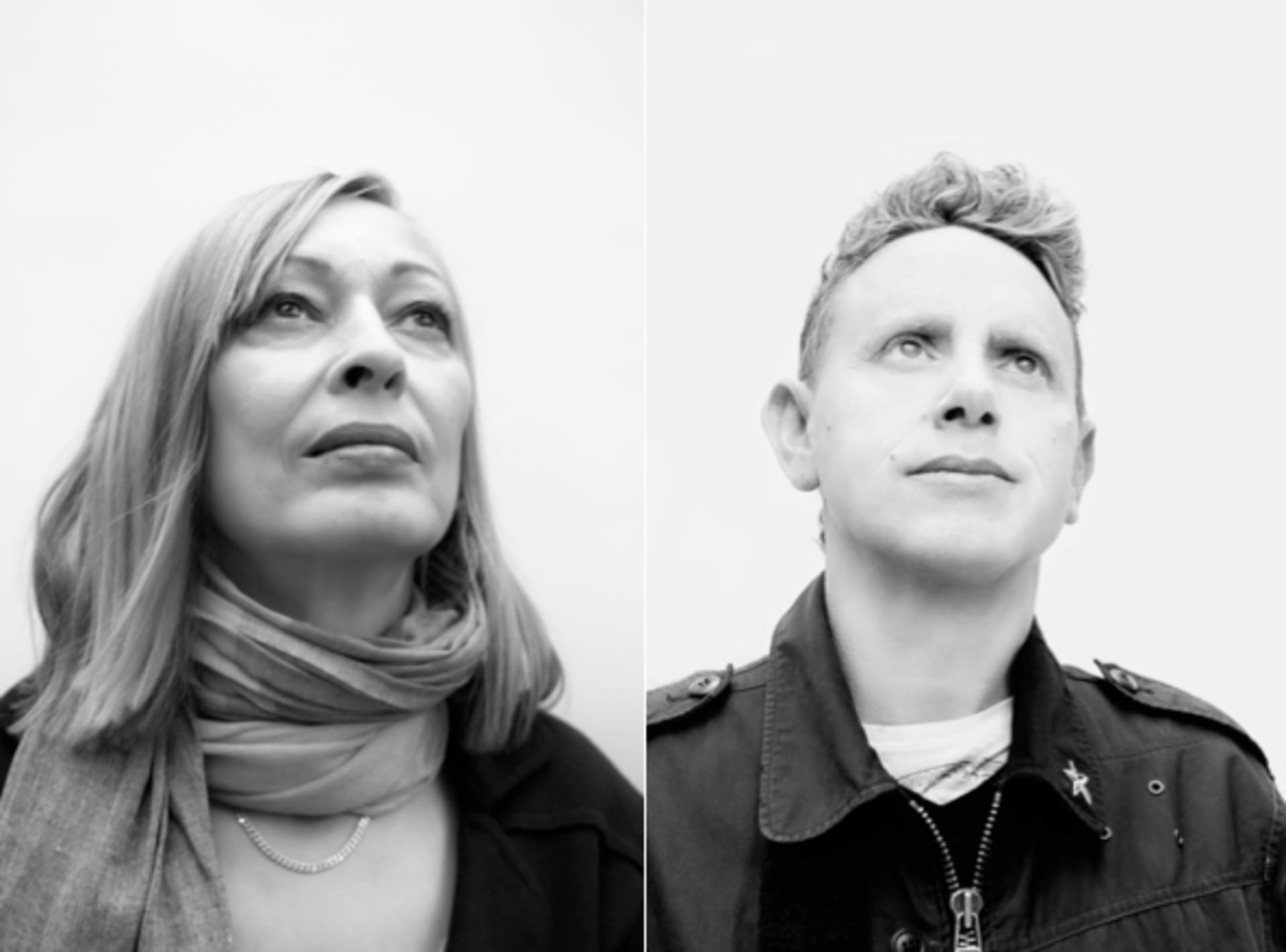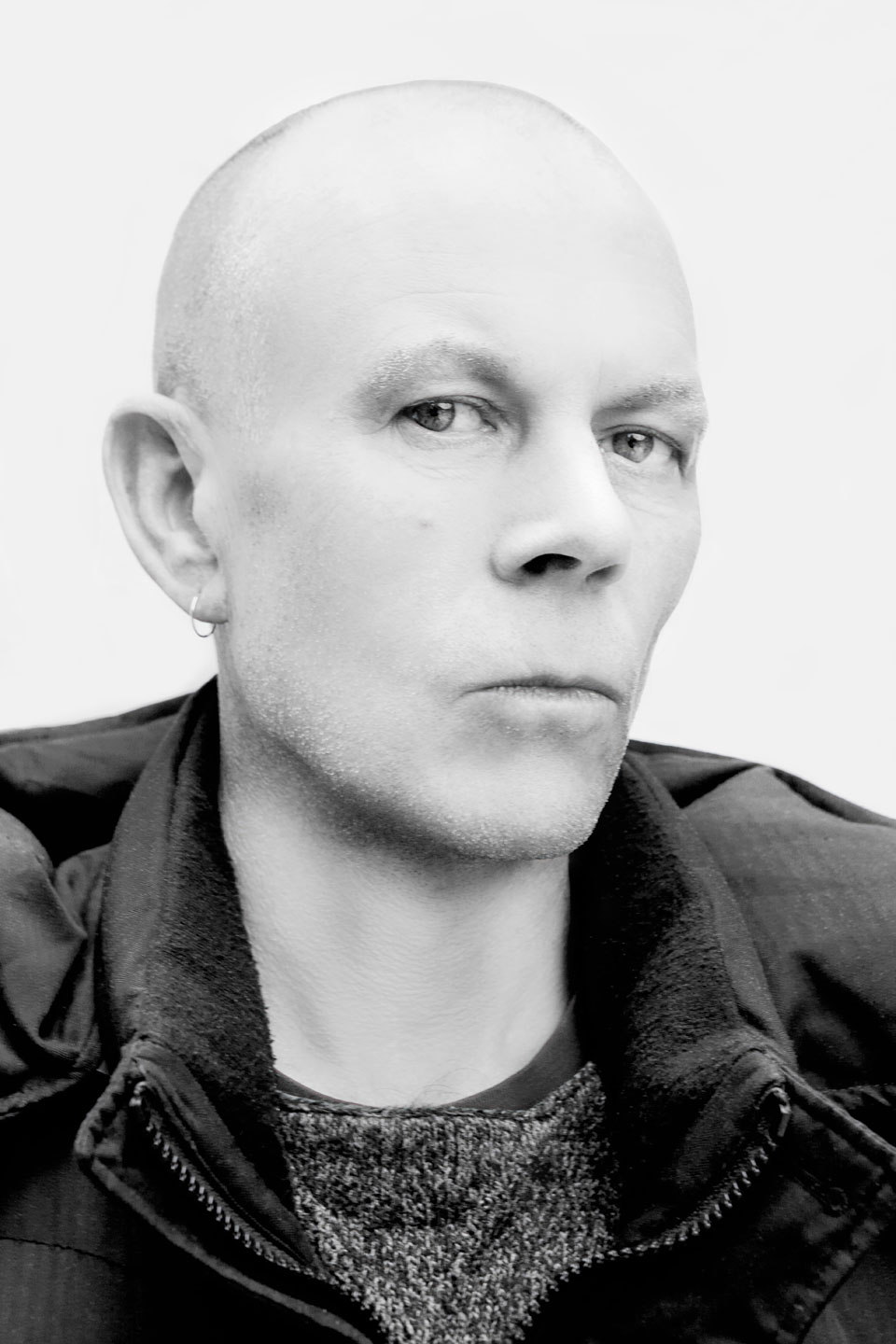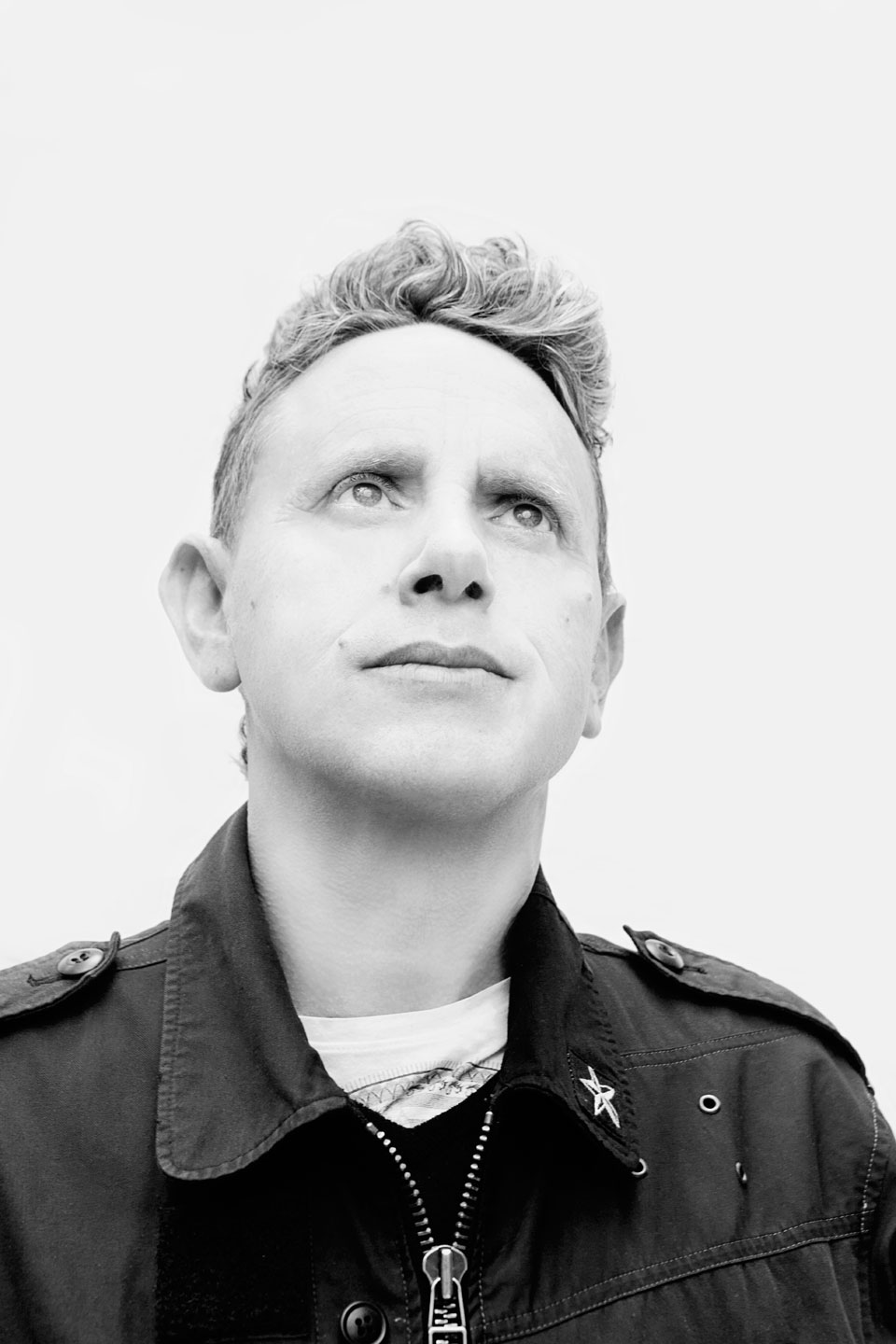
Gudrun Gut talks to Vince Clarke & Martin L. Gore
Mutual influence is a funny thing. Especially across generations. Ideas and methods reinterpreted by their originators through the filter of those they’ve inspired can be a source of creative evolution, but it can also be a recipe for (result of?) creative dead ends. Since their last collaboration over thirty years ago on Speak and Spell, Depeche Mode’s Martin Gore and Yazoo and Erasure’s Vince Clarke have teamed up once again on Ssss to explore an outgrowth of their musical legacy: minimal techno. Here, in conversation with noise/glitch-queen and Monika Enterprise chief Gudrun Gut, the pair offers insight into the process of (re)discovering a genre they helped inspire and instilling it with compositional rigor.
Martin L. Gore: Hello Gudrun! Long time, no speak. How are you?
Gudrun Gut: Guten Tag, Martin.
MLG: Is it a normal thing for you to do interviews on Skype?
GG: When I was doing promotion together with Antye [Greie] for Baustelle, Skype was our main medium of communicating with the press. Antye lives on an island in Finland, so when I would meet a journalist for an interview or promo in Berlin, she would always be part of the conversation via Skype. I don’t like to travel for the sake of giving interviews anymore, do you?
MLG: To Finland? No.
GG: Vince, are you there?

Vince Clarke: Yeah, I’m sitting next to Martin. We’re in Bel Air, Los Angeles in some posh hotel. I forgot the name. We’ve been hearing LAPD sirens since this morning …
GG: Martin lives in Santa Barbara, and you live in Maine on the East Coast. I heard that you guys were constantly exchanging files while recording Ssss, because you were each recording in separate studios. Was it ever an option for you to book studio time together? And would collaborating again after all these years have even been possible without the Internet?
MLG: We actually never discussed it because we knew we had the capability to do the file sharing. We started working like that and we soon realized how easy it was, so there was no need to change our working patterns.
GG: Sending and receiving audio files is very convenient, also for seeing how the other person works in a solitary environment. It doesn’t only lead to results; it’s also really insightful.
MLG: And it’s exciting, too. While I worked on a track, I didn’t know what Vince was doing with the same track thousands of miles east. When you work together in the studio, after a while, you know exactly how the other person works. This way, it remained inspiring for both of us.
GG: How much did you tweak what the other person sent? Was there any radical deleting or muting?
VC: I think Martin and I have a very similar idea of what the term “collaborate” stands for: in essence, it’s about working on something together. As a matter of course, you’re not only allowed but are actually obliged to object when you don’t like what the other person sent. Of course, we had discussions, but they were totally different to the kind of disputes you get when you physically record in the same space over an extended period of time. It’s probably also a matter of age. When I was twenty, I thought I knew everything, and as a result I was sometimes dictatorial. But now I’m fifty and I know that I don’t know anything. When we argued about a track, it was always part of a more open-minded discussion.
MLG: We certainly came to different results, because working seperately, you end up with a very different form of narration. We were fully aware that we were communicating in a way that was unthinkable only a couple of years ago—as unthinkable, say, as painting a picture together while being in two different cities.
GG: What did you do in the meantime while waiting for feedback from each other? Vince, when you’d bounce back a file to Martin, would you continue working or would you, like, go shopping?
VC: I’m constantly working on different projects at the same time. It was an ongoing thing to receive material from one project—like homework that I had to do—and then be transferring another work in progress to Martin. Honestly, I love working like this. I guess you’d call it multi-tasking. It’s a good way to avoid writer’s block, simply because when I felt stuck in a VCMG track, I’d switch projects and work on finding a solution to a totally different problem.
MLG: All we knew was that we wanted to make a good old techno record.
GG: Hey Mr. DJ!
MLG: [laughing] But you are right, Gudrun! I like simple concepts. And for both of us it was the first time that we worked on a dance album.
GG: But why right now? The record sounds—in a positive sense—as if it could have been released in the nineties. You’d not necessarily hear a difference.
VC: What happened was I was asked to do a remix for Plastikman. I had heard of Richie Hawtin before, but I never really listened to his music. Getting into his sound got me interested in the idea of techno. So I dove into a website called Beatport and listened to loads of it. I was amazed by the sounds some of these producers were using and how much attention they paid to even the smallest details. In general, it was fascinating to see how different people manipulated electronic music to maximum effect with an often minimalistic approach.
GG: So love to detail and the tendency to tweak the tiniest bits of sound is what attracted you to techno?
VC: In the case of Plastikman, the first thing I noticed was how minimal it was. Honestly, I first asked myself what it’s all supposed to be about. But the more I researched, the more I was drawn into the genre. So I started to work on some stuff, and then Martin joined in, and then we went on together from there.
MLG: When I DJ, I always play techno records. It all started when you took me to the Tresor and the WMF and all the other clubs in Berlin in the early nineties.
GG: I remember.
MLG: That was my formative techno period I’d say. Unfortunately, in America nobody likes techno, even though electronic music in general is so in fashion right now. The whole DJ culture is big, but it’s not a techno thing. Deadmau5 is huge at the moment. Skrillex, too. I really like that electronic music is now accepted as mainstream. With the exception of the early eighties, it was never considered “real” music. Even with Depeche Mode I remember countless interviews in the US where we had to defend ourselves for not playing “real” instruments. The electronic music boom has made this a thing of the past now, and to me, it feels like an evolutionary process. You probably see it the same: When you did your pioneering work with Einstürzende Neubauten and Malaria!, you accepted noise as part of the sonic architecture. Nowadays, everybody incorporates it into their music— butbackthen…
GG: That’s absolutely right.
MLG: How’s your label Monika doing?
GG: Oh, we’re bankrupt.
MLG: Really?!
GG: No, but we’re going through rough times. Running a record company has become a very expensive hobby, you know. But I use the freedom running Monika gives me to the full extent. We just brought out an album by Barbara Morgenstern, and I’m working on a new record of my own at the moment—and nobody dares to bother me.

MLG: Where are you recording it?
GG: Out in the country, in the midst of untouched nature. I bought this little country house in Brandenburg just outside Berlin.
MLG: You mentioned this . . .
GG: I feel good recording music and being surrounded by nature. Discovering nature has been the new thing in my life.
MLG: Do you prefer the daylight situation in the studio where you can see through the window or the bunker feeling with no daylight at all?
GG: I don’t care. As long as I know that I can step out and be surrounded by fresh air, because when you’re working on music you’re in a different world . . .
VC: My studio in Maine is beautiful. I like to look out the window when I need to refocus . . . but that certainly won’t inspire me to write songs about trees. I guess it calms me down. Of course, I know that I’m detached from any “scene” when at work in my studio. But then again, I’m not trying to contribute to any scene with the music I make.
GG: I would say the art I make and the life I lead are pretty intimately connected. It’s never detached. I actually know plenty of producers who listen to a lot of other people’s music when making their own stuff. Do you?
MLG: Not at all.
GG: Good man.
MLG: After listening to a lot of techno, I got this idea that you have to keep it four-on-the-floor. [laughing] That’s the defining parameter when it comes to techno. I don’t need to listen to other people’s music after having understood this simple but important rule.
GG: Would you say it makes it easier to produce because functional music is built up on pre-defined rhythmical patterns?
VC: I discovered techno quite late. But yes, it was relieving to realize that I didn’t have to write words or a catchy melody to bring across a feeling or an emotion. From that moment on, I saw techno as a big, huge sound sculpture that allowed me to tweak and twist sounds wherever and whenever I felt it was appropriate. That’s what allowed the emotion back into the music.
GG: So it wasn’t functional in the sense that you wanted to make people dance?
VC: It’s funny—obviously I like people dancing, and I was especially happy to see my son dancing to VCMG. He’s actually more of a rocker, but he liked these particular tracks.
GG: One of the ideas behind techno is to offer an “infinite” rhythm and sound experience for dancing—in extreme cases, it can be for days. You could have recorded a thirtyhour record like Terre Thaemlitz . . . even though that had little to do with functionality.
VC: Well, we limited ourselves in that regard. We recorded everything with the idea of putting out a record and not a number of disconnected tracks. We approached it like in the good old days. It’s a question of format. Martin and I come from a generation that grew up with vinyl . . .
MLG: It’s just ingrained in us. I quite liked it when we were limited to twenty-four minutes for each side with Depeche Mode.
GG: Yes, that’s nice. But come on Martin, you showed me your huge collection of MP3s . . .
MLG: Of course I do buy MP3s on a daily basis. I’m fully aware that these are modern times. But I still fondly remember the beauty of limitation. We always used to record songs knowing that we would listen to them within the boundaries of vinyl: with a break in-between. Or, in the case with VCMG, a double album of equal length on each side and three breaks in-between. I’m actually happy that Ssss works as an album on both vinyl and CD, but I’m not surprised. Let me ask you one question, Gudrun: How do you deal with time restrictions when putting together the dramaturgical arc for your Oceanclub radio show?
GG: Funny you ask. I recently became desperate when I wanted to do a special feature about Richie Hawtin’s M-nus label. It all soundedthesame…

MLG: How did you deal with it?
GG: [laughing] We canceled it. What did you guys do after you finished Ssss?
MLG: I went straight from this project to writing songs for Depeche. And, of course, I approached it with the new experiences I’ve gathered with VCMG.
VC: After making instrumental music it suddenly felt very easy to write pop songs again. It felt easy to reconnect with lyrics and singing.
GG: I assume you’ve probably heard of Alva Noto’s and Blixa Bargeld’s collaboration, ANBB? I even thought about calling Antye Greie’s and my project “AGGG”, but she thought it was too detached and too impersonal, so we ended up with Greie Gut Fraktion.
MLG: I know Alva Noto’s record, but I didn’t have it in mind when we had to present Mute with a name. We settled on VCMG in a ten-minute transatlantic conference call with Daniel Miller. He particularly liked it because it’s also a synth acronym for Volume Control Modulation Generator.
GG: And what about the album title, Ssss? Does that have any connotation to Germany or to the War?
MLG: No, no, wrong path. It’s the sound snakes make, a hiss. To make it even more explicit we chose a snake painting for the sleeve. They’re actually very childlike snakes. Again, there’s a reason. During the recording process we sometimes had tracks that were pure white noise. Vince would always label them “hissss”. That’s it, really. The only thing we were concerned about was that the snakes shouldn’t look too rock. We all know the iconic quality of snakes in the hard rock context . . . Tattooed snakes, for instance, would have been too much. That’s why we wanted to keep them innocent and childlike.
GG: Who painted them?
MLG: Honestly, I forgot. Mute took care of it and we just picked the image we liked most. Same thing with Stefan Betke who mastered the record. We knew what we wanted, and again it was Daniel Miller who suggested Stefan to do the mastering. Of course, I know his work as Pole, so it was again a five-minute decision in a transatlantic conference call.
[Skype connection starts to fail, five minutes are spent talking on top of each other. After brief troubleshooting attempts, everyone agrees to one final question.]
GG: I just read in an American science magazine that humans experience the highest state of happiness just before the age of fifty. Only in hindsight can we classify past happiness as “less” happy. What do you think about that?
MLG: That’s a funny theory. Obviously it very charmingly opens up new vistas about aging. When exactly does the state of happiness begin?
GG: Around forty-eight, I think it was. Of course, some people experience it a little earlier or a little later. The idea is that serotonin— the so-called “happy hormone”—is released in larger quantities to ease the pain that comes with aging.
MLG: They should sell it as a drug to younger people. Then we’d all be so happy.
GG: They already do: it’s called Prozac.
One band, two studios. One shoot, two portraits: Martin L. Gore AND Vince Clarke, photographed in L.A. by Austin Young. Gudrun Gut, photographed in Berlin by Hans Martin Sewcz.
Published August 31, 2012. Words by Gudrun Gut.
